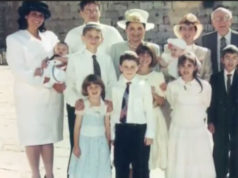This year, Lag B’Omer, the 33rd day of the Omer, is celebrated on May 18. Lag B’Omer is the 33rd day of S’firat Ha’Omer (the Counting of the Omer).
According to the Talmud, 24,000 students of Rabbi Akiva died in one short period, because “they did not show proper respect to one another.” And all of them died between Pesach and Shavuot as a result of a mysterious G-d sent plague that raged during the days of the Omer counting. For that reason, it is customary to observe a period of mourning during this time. Weddings are not held, hair is not cut, and music is not heard. This period is a time to reflect upon our midot (values) and improve our relations with others.
We are obligated to count the days from the second night of Pesach to the day before Shavuot—seven full weeks. This period is known as the Counting of the Omer.
These 49 days represent the 49 days of preparation from yetziat Mitzrayim (the exodus from Egypt) to Matan Torah (the giving of the Torah) on Shavuot, the 50th day of counting the omer.
Through the years, the Omer period has become identified with sad memories. Massacres occurred during the period of the Romans and later still during the Crusades. In the days of the Roman Emperor Hadrian, the Jews—led by Bar Kochba—attempted to drive out the foreign oppressors from Judea. The revolt was unsuccessful, and thousands of Jews lost their lives during the fighting.
Lag B’Omer, the 33rd day of the counting of the Omer, is observed as a day of rejoicing because on this day, the students of Rabbi Akiva stopped dying. Lag B’Omer is a festival in the middle of days of mourning that precede and follow it, when the ban on weddings and joyful occasions is lifted.
Lag B’Omer is also the anniversary of the death of the Talmudic Sage and disciple of Rabbi Akiva, Rabbi Shimon bar Yochai, author of the Zohar. The Zohar which means “The Shining Light,” deals with the mystical teachings of the Torah.
Tens of thousands of Jews congregate at Meron, the burial place of Rabbi Shimon bar Yochai, and his son, Rabbi Elazar. Rabbi Bar Yochai requested that his students celebrate his yahrtzeit. Even though the death of such a great Sage is a sad event, there is also joy surrounding the fact that he attained his final reward (as the Zohar explains), and the fact that he revealed many deep secrets of the Torah to his students on his dying day.
It is said that on the day Rabbi Shimon died, a great light of endless joy filled the day because of the secret wisdom he revealed to his students. That secret wisdom was recorded in the Zohar. The sun did not set until Rabbi Shimon had revealed all that he was allowed to reveal. As soon as he was done, the sun set and he died.
Lag B’Omer is characterized by a day of outings. In Israel and throughout the Diaspora, the day is celebrated with picnics, and it is customary to light bonfires and sing and dance around them.
The fire that surrounded the house, preventing any but Rabbi Shimon’s closest students from approaching, serves as a basis for the custom of lighting bonfires on Lag B’Omer. And because of the happiness back then, we celebrate with happiness now, as well.
Many parents wait until their son is three to cut his hair, and the first haircut is usually on Lag B’Omer.



